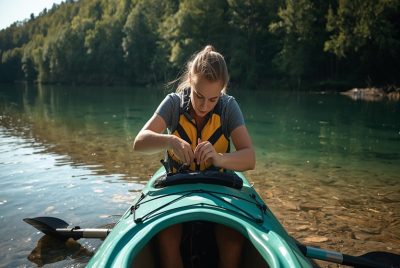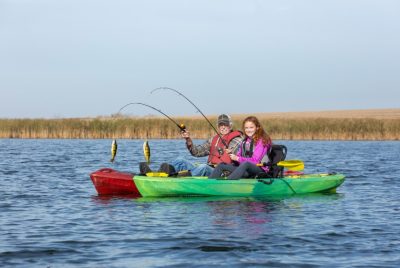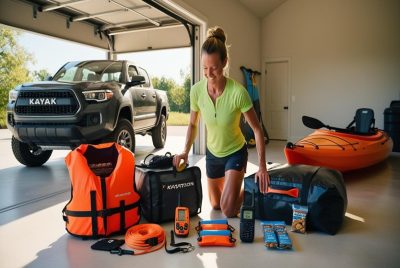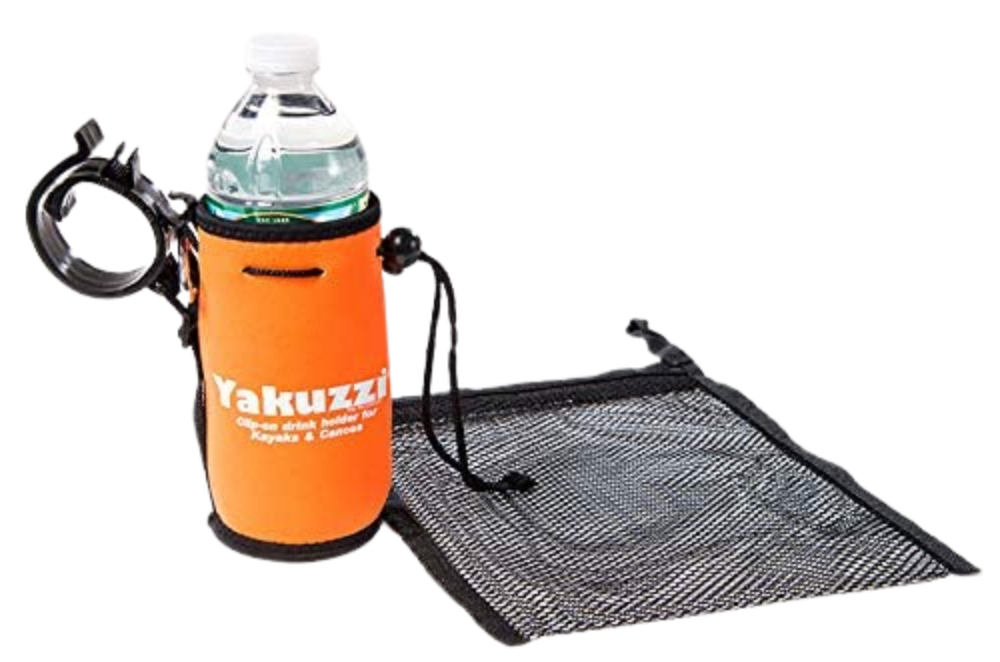Kayaking is one of those outdoor adventures that blends peace with adrenaline. One moment you’re gliding…
12 Kayak Fish‑Finding Tips Using Electronics And Sonar
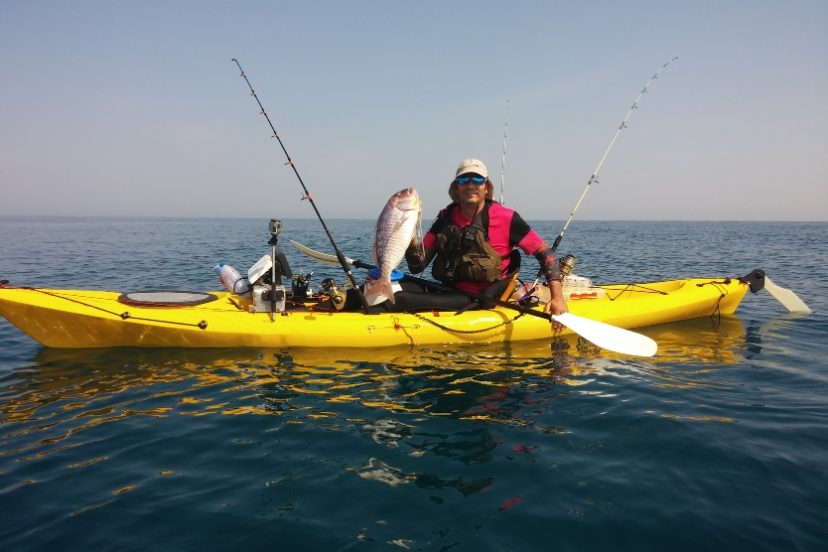
If you’ve ever sat in your kayak, wondering where the fish are hiding, you’re not alone.
Kayak fishing is one of the most exciting and rewarding ways to spend a day on the water, but let’s be honest—it can also be frustrating when the fish just aren’t biting.
That’s where electronics and sonar step in to give you the upper hand.
Whether you’re brand-new to fish finders or you’ve been tinkering with sonar for a while, understanding how to maximize these tools can completely change your game.
We’ll dive into 12 practical, proven kayak fish-finding tips. Each section is designed to give you not just information, but also ideas, best practices, and real-world tactics you can put into action on your very next trip.
From adjusting sensitivity to learning how to read structure, we’ll cover it all in a conversational, easy-to-digest style.
Let’s get started.
1)) Choose the Right Fish Finder for Your Kayak
Before you can master the art of finding fish in a kayak, you need the right gear.
Not all fish finders are created equal, and kayaks have unique space and weight considerations.
A massive, power-hungry unit designed for big boats isn’t going to work well when you’re paddling a 12-foot sit-on-top.
Smart Selection Checklist
- Size Matters: Look for compact models with screens between 4 and 7 inches. Anything bigger can feel overwhelming in a kayak.
- Portability: Choose a fish finder with quick-release mounts so you can remove it when transporting your kayak.
- Power Source: Kayaks don’t have outboard batteries, so lightweight 12V lithium batteries are the best choice.
- Water Resistance: You’re going to get splashed. Pick a unit with strong waterproof ratings.
A good example is the Garmin Striker series—small, portable, and powerful enough to read depths and mark fish without taking up half your deck.
2)) Position Your Transducer Correctly
A fish finder is only as good as the transducer placement. If it’s mounted poorly, your sonar will give you inaccurate or confusing readings.
Kayakers often mount transducers in one of three ways: through-the-hull, scupper hole mounts, or over-the-side arms.
Mounting Options Breakdown
- Through-the-Hull Mount: Clean and protected, but may slightly reduce clarity.
- Scupper Hole Mount: Uses existing holes in many fishing kayaks. Keeps the transducer submerged.
- Over-the-Side Arm: Most flexible option, though it adds clutter on deck.
Take the time to test your setup before your big trip. Paddle into shallow water and compare the depth reading with a manual check to ensure accuracy.
3)) Learn to Read Basic Sonar Images
You don’t need to be a scientist to read sonar, but you do need to know what you’re looking at.
Many beginners mistake debris or vegetation for fish. Learning to interpret sonar is key to finding fish in a kayak.
Quick Sonar Interpretation Hacks
- Fish Arches: Fish usually show up as arches or half-moons on your display.
- Bottom Hardness: A thick, bright line indicates a hard bottom; a thinner, lighter line shows soft mud.
- Vegetation: Appears as fuzzy or green-tinted clutter, depending on your unit.
Pro tip: Spend time in areas where you can visually confirm fish or structure and compare what you see above water to what the sonar shows.
4)) Adjust Sensitivity and Gain
Your sonar unit has a sensitivity or gain setting that controls how much detail you see on the screen.
Too high, and you’ll get a noisy, cluttered display. Too low, and you’ll miss important signals.
Sensitivity Fine-Tuning Ideas
- Start in auto mode, then manually tweak up or down.
- In murky water, lower the sensitivity to reduce false readings.
- In clear, deep water, increase sensitivity to pick up faint signals.
- Adjust frequently as you change depth or environment.
Think of this as tuning a radio. The clearer the signal, the easier it is to lock onto fish.
5)) Use GPS and Waypoints Wisely
Most modern kayak fish finders include GPS, and this feature is far more powerful than many anglers realize.
It’s not just about navigation—it’s about building your personal fishing map.
GPS Best Practices for Kayakers
- Mark Hotspots: If you find a productive spot, drop a waypoint so you can return easily.
- Record Drift Paths: Save tracks when you drift across a school of fish.
- Plan Safe Routes: Use GPS to track shallow hazards and make your return trip stress-free.
- Build a Map: Over time, your kayak GPS map becomes your secret fishing journal.
This is one of the best hacks for consistently finding fish in a kayak trip after trip.
6)) Identify Structure and Cover
Fish love structure. Whether it’s a submerged log, rock pile, or weed edge, these areas attract baitfish—and where baitfish go, predators follow. Your fish finder is the ultimate tool for identifying these hidden gems.
Structure Spotting Worksheet
- Drop-offs: Sudden depth changes are prime ambush points.
- Weed Edges: Sonar will show a wall of vegetation with open water beside it.
- Rock Piles: Appear as jagged, irregular returns on sonar.
- Man-Made Cover: Old bridges, docks, or sunken debris all light up the screen.
When you locate structure, slow down and scan carefully. Many anglers miss fish because they paddle right past promising zones.
7)) Dial in Depth Ranges
Fish don’t hang out everywhere. They concentrate at certain depths depending on temperature, oxygen, and food availability. That’s why setting depth ranges on your sonar is so valuable.
Depth Range Tips for Kayak Anglers
- Set Upper and Lower Limits: Focus the display on the depth band where fish are holding.
- Watch Thermoclines: These layers often appear as faint lines, and fish love to hang just above them.
- Seasonal Awareness: In summer, fish often move deeper. In spring, they may be shallow.
Limiting your screen to a specific range eliminates distractions and helps you focus on the action zone.
8)) Use Side Imaging for Wider Coverage
Side imaging sonar is a game-changer for kayak fishing. Instead of just seeing what’s below, you can scan out to the sides—perfect for covering large areas without paddling in circles.
Side Imaging Advantages
- Scout Large Areas Quickly: Identify schools or structures 50–100 feet to each side.
- Stay Stealthy: You don’t need to paddle right over fish to know they’re there.
- Map Shorelines: Great for scanning docks, trees, and drop-offs parallel to the bank.
While side imaging units are pricier, they’re worth it if you want to up your efficiency in finding fish in a kayak.
9)) Master Down Imaging for Detail
If side imaging is about width, down imaging is about detail. Down imaging sonar provides clearer, photo-like views of what’s beneath your kayak, making it easier to distinguish fish from cover.
Down Imaging Use Cases
- Identify Fish in Cover: Spot bass tucked into brush piles.
- Separate Fish from Debris: Clearer views help avoid confusion.
- Check Structure Quality: Instantly know whether that shadow is weeds, rocks, or a log.
Pairing down imaging with traditional sonar is the best one-two punch for kayak anglers.
10)) Track Baitfish Schools
Predatory fish like bass, walleye, and striped bass are never far from baitfish. If you find the bait, you usually find the catch. Your electronics make this easy once you know what to look for.
Baitfish Spotting Hacks
- Cloud-Like Returns: Schools often appear as large blobs or clouds.
- Surface vs. Deep: Note whether baitfish are shallow or suspended mid-water.
- Predator Position: Look for larger arches around the edges or beneath schools.
If you’re struggling to locate game fish, stop chasing them directly and start hunting for the food source instead.
11)) Use Sonar History to Review Missed Spots
Most fish finders let you scroll back through recent sonar history. This overlooked feature can help you catch what you missed while paddling or casting.
Sonar History Best Practices
- Pause and Review: If something looks odd, stop and scroll back to confirm.
- Mark Waypoints Retroactively: Drop a GPS marker on spots you passed.
- Learn Patterns: Reviewing history helps you see how fish position themselves along structure.
Think of it as an instant replay for your fishing trip—a second chance at fish you might have overlooked.
12)) Keep Your System Powered and Protected
Nothing kills a kayak fishing trip faster than a dead battery or water-damaged electronics. Protecting your investment ensures you can rely on your sonar every time you launch.
Kayak Electronics Protection Guide
- Use Waterproof Battery Boxes: Keep your power source dry.
- Carry a Backup Battery: Small lithium spares are lightweight insurance.
- Dry Bags for Units: Store your display in a dry bag during transport.
- Regular Maintenance: Rinse saltwater off connectors and cables after each trip.
A little care goes a long way in making sure your electronics keep working season after season.
Conclusion
Kayak fishing is already an adventure, but adding electronics and sonar takes it to another level.
With the right setup and these 12 tips, you’ll move beyond guesswork and start making informed decisions about where and how you fish.
From choosing the right fish finder to learning how to read baitfish schools, every step helps you gain an edge.
The next time you’re out on the water, remember: finding fish in a kayak isn’t about luck.
It’s about preparation, knowledge, and using your tools wisely. With practice, you’ll spend less time searching and more time reeling them in.

